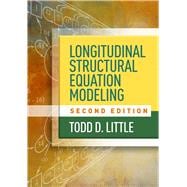Beloved for its engaging, conversational style, this valuable book is now in a fully updated second edition that presents the latest developments in longitudinal structural equation modeling (SEM) and new chapters on missing data, the random intercepts cross-lagged panel model (RI-CLPM), longitudinal mixture modeling, and Bayesian SEM. Emphasizing a decision-making approach, leading methodologist Todd D. Little describes the steps of modeling a longitudinal change process. He explains the big picture and technical how-tos of using longitudinal confirmatory factor analysis, longitudinal panel models, and hybrid models for analyzing within-person change. User-friendly features include equation boxes that translate all the elements in every equation, tips on what does and doesn't work, end-of-chapter glossaries, and annotated suggestions for further reading. The companion website provides data sets for the examples--including studies of bullying and victimization, adolescents' emotions, and healthy aging--along with syntax and output, chapter quizzes, and the book’s figures.
New to This Edition:
*Chapter on missing data, with a spotlight on planned missing data designs and the R-based package PcAux.
*Chapter on longitudinal mixture modeling, with Whitney Moore.
*Chapter on the random intercept cross-lagged panel model (RI-CLPM), with Danny Osborne.
*Chapter on Bayesian SEM, with Mauricio Garnier.
*Revised throughout with new developments and discussions, such as how to test models of experimental effects.








